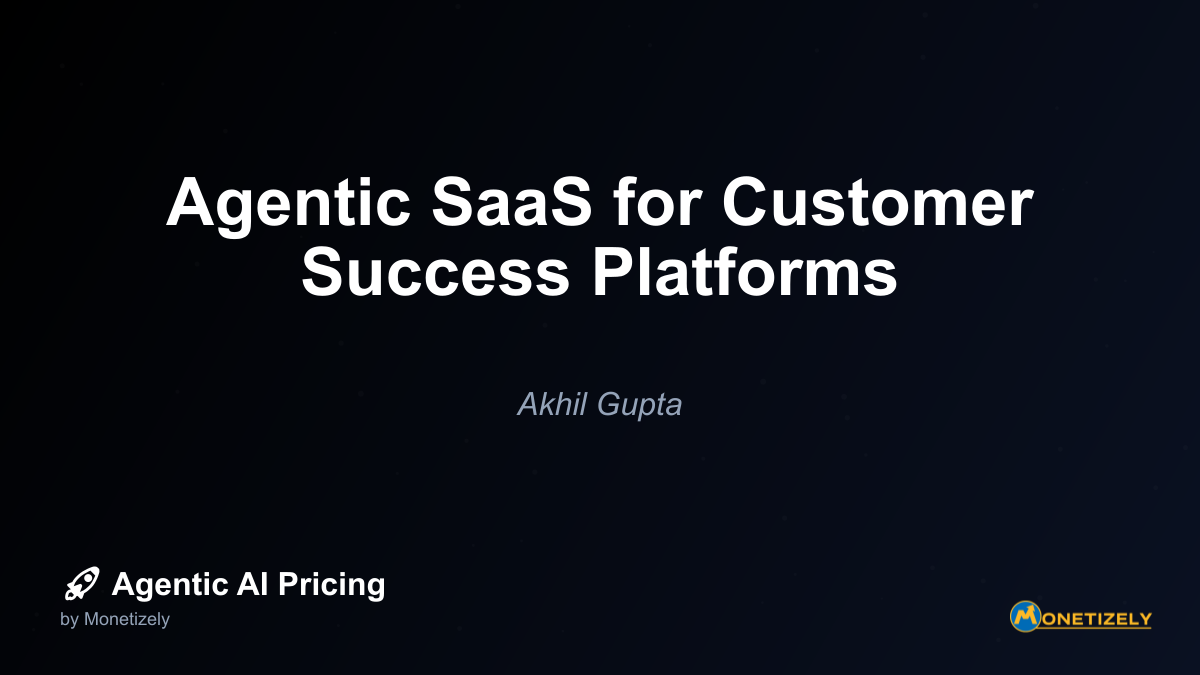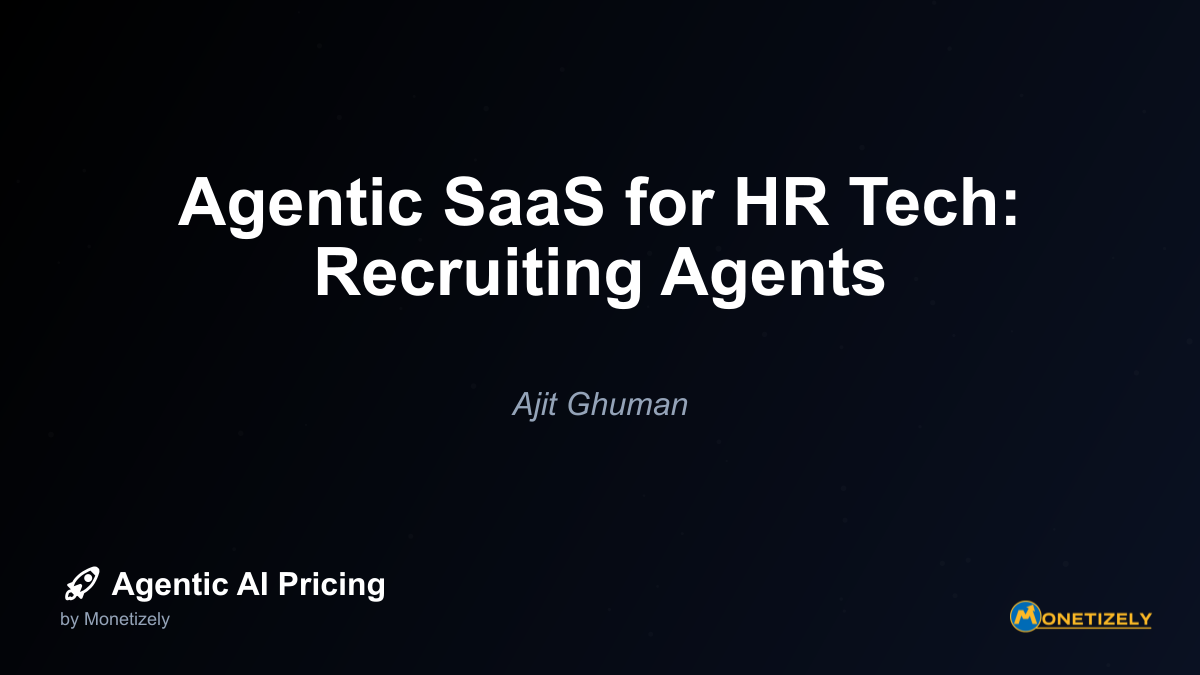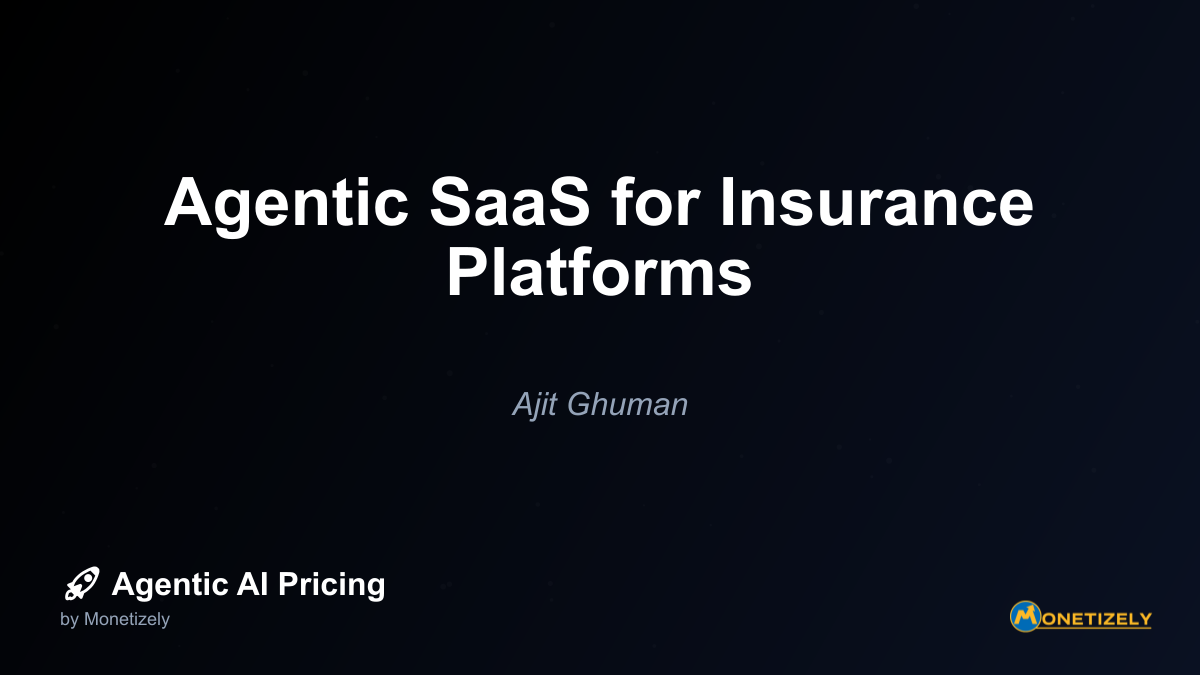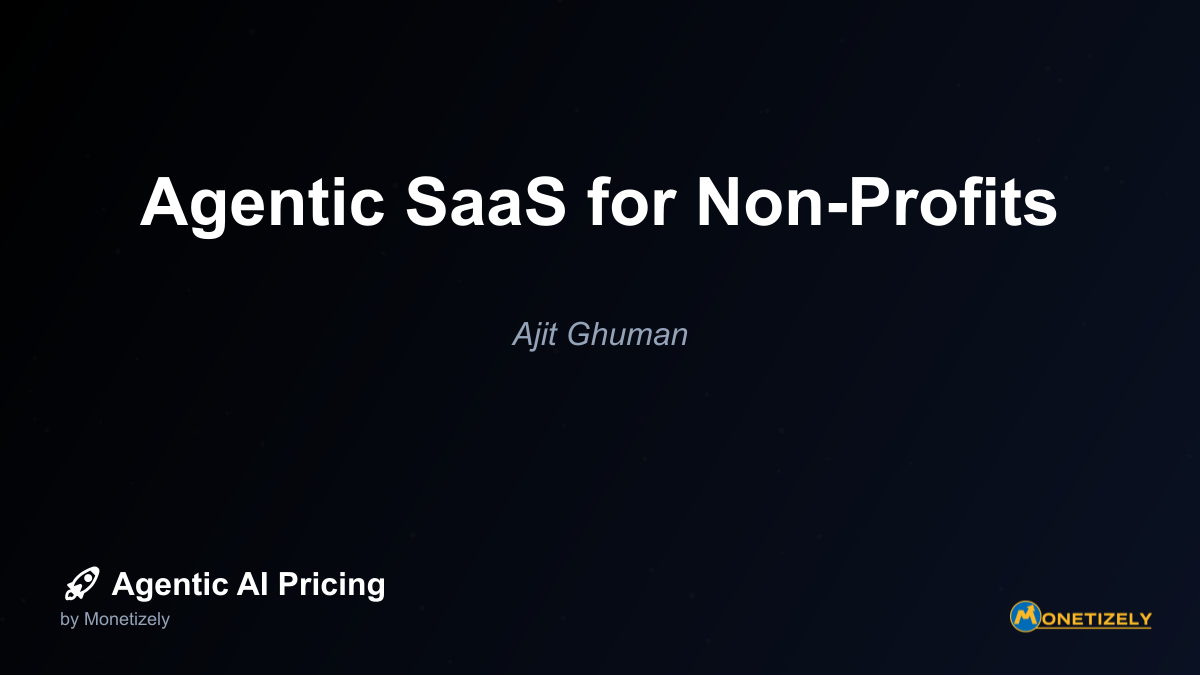· Akhil Gupta · Vertical Applications · 6 min read
Agentic SaaS for Manufacturing Platforms
AI and SaaS Pricing Masterclass
Learn the art of strategic pricing directly from industry experts. Our comprehensive course provides frameworks and methodologies for optimizing your pricing strategy in the evolving AI landscape. Earn a professional certification that can be imported directly to your LinkedIn profile.
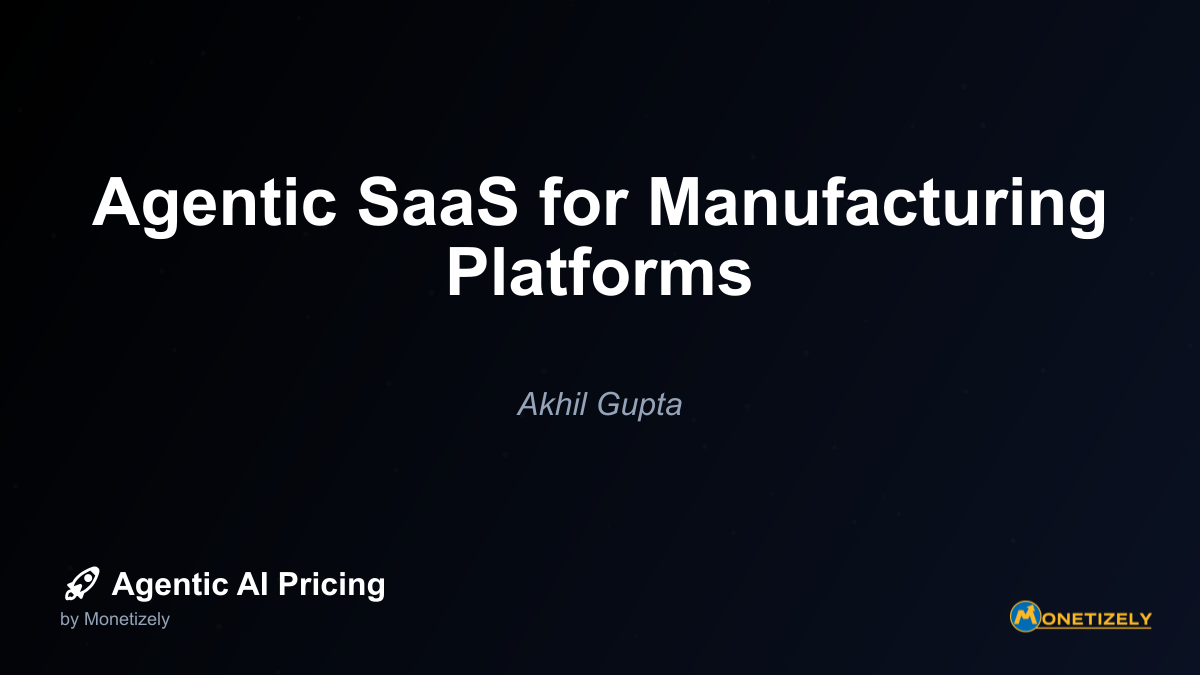
Implementation Challenges and Best Practices
While the benefits of agentic manufacturing platforms are compelling, implementation comes with significant challenges. Organizations considering these systems should be aware of several common hurdles:
Data Integration and Quality
Agentic systems rely on high-quality, consistent data from across production environments. Challenges include:
- Connecting legacy equipment that lacks native IoT capabilities
- Ensuring data quality and consistency across different machines and sensors
- Managing the volume of data generated in real-time
- Standardizing data formats across different systems and vendors
Best practice: Begin with a comprehensive data assessment and implement data governance protocols before full deployment. Consider phased implementation starting with the most modern equipment or most critical production lines.
Change Management and Workforce Adaptation
The introduction of autonomous agents can create anxiety and resistance among the workforce. Key challenges include:
- Addressing fears about job displacement
- Training staff to work effectively alongside autonomous systems
- Establishing appropriate levels of human oversight
- Shifting from reactive to predictive operational mindsets
Best practice: Involve shop floor personnel early in the implementation process, focus on how the technology augments rather than replaces human capabilities, and provide comprehensive training on the new systems.
Security and IP Protection
Manufacturing data often contains valuable intellectual property, making security a critical concern:
- Protecting proprietary process data in cloud environments
- Securing connections between edge devices and cloud platforms
- Managing access controls across complex organizational structures
- Ensuring compliance with industry regulations and standards
Best practice: Implement zero-trust security architectures, conduct regular security audits, and work with vendors that offer industry-specific compliance certifications.
ROI Measurement and Validation
Measuring the true return on investment from agentic systems can be challenging:
- Isolating the impact of software from other operational changes
- Accounting for both direct and indirect benefits
- Establishing appropriate baseline measurements
- Tracking improvements over time as the system learns and evolves
Best practice: Establish clear KPIs before implementation, document baseline performance thoroughly, and implement robust analytics to track changes attributable to the agentic system.
Case Studies: Agentic SaaS in Action
Case Study 1: Automotive Component Manufacturer
A medium-sized automotive component manufacturer implemented an agentic production monitoring system across their CNC machining operations. Key results included:
- 37% reduction in unplanned downtime through predictive maintenance
- 12% increase in overall equipment effectiveness (OEE)
- 8% reduction in energy consumption
- 42% decrease in quality defects
The system paid for itself within 9 months, primarily through the reduction in scrap and rework costs. Particularly valuable was the system’s ability to correlate subtle variations in machine parameters with downstream quality issues that weren’t obvious to human operators.
Case Study 2: Food Processing Company
A large food processing company deployed an agentic system focused on production line balancing and recipe optimization:
- 15% increase in throughput on existing lines
- 23% reduction in ingredient waste
- 18% improvement in batch consistency
- 31% reduction in quality control sampling requirements
The most significant benefit came from the system’s ability to continuously fine-tune recipes based on slight variations in raw material properties, something that would have been impractical for human operators to manage manually.
Case Study 3: Pharmaceutical Manufacturing
A pharmaceutical manufacturer implemented an agentic system primarily focused on compliance and quality assurance:
- 99.8% reduction in documentation errors
- 28% decrease in batch release time
- 41% reduction in quality investigation duration
- 100% traceability of all production parameters
For this company, the primary value wasn’t efficiency gains but rather the dramatic improvement in regulatory compliance and the ability to provide complete, accurate documentation for every production batch.
The Future of Agentic Manufacturing Platforms
The field of agentic manufacturing software is evolving rapidly. Several emerging trends will likely shape its development in the coming years:
Increased Autonomy
Current systems typically operate under significant human oversight, but the trend is toward greater autonomy:
- Self-optimizing production lines that can reconfigure themselves based on changing requirements
- Autonomous quality systems that can adjust process parameters in real-time
- Self-healing machines that can compensate for wear or minor failures
- Systems that can autonomously design and test process improvements
Cross-Factory Optimization
While current implementations typically focus on individual factories, future systems will likely optimize across entire manufacturing networks:
- Dynamic production allocation across multiple facilities
- Supply chain integration that adapts to changing conditions
- Knowledge transfer of best practices between similar production lines
- Network-wide resource optimization (energy, materials, labor)
Human-Agent Collaboration Models
The relationship between human workers and AI agents will continue to evolve:
- Augmented reality interfaces that blend human expertise with AI insights
- Natural language interaction between operators and manufacturing agents
- Collaborative problem-solving combining human creativity with AI analysis
- Personalized operator assistance based on individual experience levels
Edge-Cloud Hybrid Architectures
To address latency, security, and reliability concerns, manufacturing platforms are moving toward hybrid architectures:
- Critical control functions executed at the edge for reliability
- Complex analysis and learning performed in the cloud
- Seamless transitioning between online and offline operation
- Distributed intelligence that functions even during connectivity disruptions
Selecting the Right Agentic Manufacturing Platform
For organizations considering agentic manufacturing platforms, the selection process should consider several key factors:
Integration Capabilities
- Compatibility with existing equipment and systems
- Availability of pre-built connectors for common manufacturing technologies
- Support for industry standards like OPC UA, MQTT, or ISA-95
- Flexibility to accommodate both legacy and modern equipment
Agent Intelligence and Autonomy
- Level of intelligence and decision-making capability
- Learning capabilities and improvement over time
- Transparency of agent decision-making processes
- Options for different levels of human oversight
Deployment and Scalability
- Cloud, on-premises, or hybrid deployment options
- Ability to start small and scale incrementally
- Performance with high data volumes and complex environments
- Geographic distribution capabilities for multi-site operations
Security and Compliance
- Data encryption and protection measures
- Access control and authentication systems
- Compliance with industry-specific regulations
- Audit trails and documentation capabilities
Vendor Expertise and Support
- Industry-specific manufacturing knowledge
- Implementation support and services
- Training programs for different user roles
- Ongoing development and innovation roadmap
Conclusion: The Strategic Imperative of Agentic Manufacturing
Agentic SaaS platforms for manufacturing represent more than just another technology upgrade—they fundamentally transform how production environments can be monitored, managed, and optimized. As manufacturing faces increasing pressures from global competition, supply chain disruptions, and workforce challenges, these intelligent systems offer a path to greater resilience, efficiency, and quality.
The key advantages—predictive maintenance, continuous optimization, comprehensive quality control, and data-driven decision-making—directly address the most pressing challenges facing modern manufacturers. While implementation requires careful planning and change management, the potential returns in terms of reduced costs, improved quality, and increased agility make these platforms increasingly essential for competitive manufacturing operations.
For manufacturing executives and operations leaders, the question is rapidly shifting from “Should we implement agentic systems?” to “How quickly can we implement them, and how can we maximize their value?” As these technologies mature and demonstrate clear ROI across diverse manufacturing environments, they will increasingly become standard operating infrastructure rather than competitive differentiators.
Organizations that move proactively to implement and master these platforms will likely find themselves at a significant advantage in terms of operational efficiency, product quality, and ability to adapt to changing market conditions—while those that delay may find themselves struggling to catch up in an increasingly data-driven and automated manufacturing landscape.
For a deeper understanding of usage-based pricing models specifically designed for manufacturing applications, explore our detailed guide on Manufacturing SaaS Pricing: Usage-Based Models for Industrial Applications.
To learn how agentic AI differs from traditional AI in pricing strategy, check out our comprehensive comparison at How Do Agentic AI and Traditional AI Pricing Models Compare?
Co-Founder & COO
Akhil is an Engineering leader with over 16+ years of experience in building, managing and scaling web-scale, high throughput enterprise applications and teams. He has worked with and led technology teams at FabAlley, BuildSupply and Healthians. He is a graduate from Delhi College of Engineering and UC Berkeley certified CTO.
Pricing Strategy Audit
Let our experts analyze your current pricing strategy and identify opportunities for improvement. Our data-driven assessment will help you unlock untapped revenue potential and optimize your AI pricing approach.

